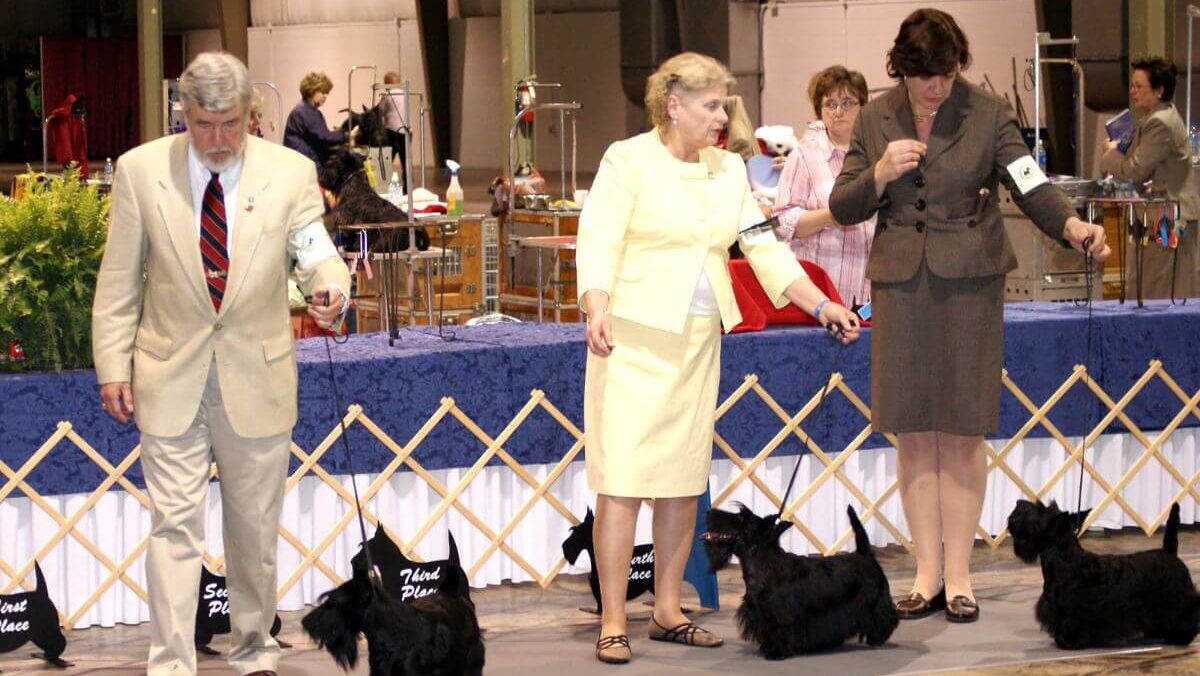


Home » Judging the Scottish Terrier

This article was originally published in Showsight Magazine, July 2013 issue.
It has been well over forty years that I have been judging Scotties, and remembering those early days brings back lots of memories. The Scottie folks I remember best are Johnny Murphy, Blanche Reeg, and Mrs. Augustus Riggs. Johnny, of course, was a Master of the Craft at presenting the breed as he was the exclusive handler for the Salters; he sort of took me under his wing and taught me a lot about terriers in general, but especially Scotties. Blanche Reeg was someone my parents and I admired because she successfully bred and showed her own dogs. And Mrs. Riggs was a model of decorum and ethical behavior; I will never forget how she always felt the tip of the tails when she judged Scotties.
I asked her about that and she said it was to check to see if any of them had been slightly docked! I suppose she had experienced that problem when she was breeding Scotties herself. I also had the pleasure of judging the great Shannon. Many judges will tell you that there are one or two dogs in each breed that stand out in their memories as the ones to use as a tool by which to measure all others, and Shannon holds that place for me. Not only was she a lovely example of proper type but her presentation by the masterful George Ward was superb. George took no shortcuts in Shannon’s grooming; it was all done by hand with no clippers ever used! Wouldn’t it be refreshing to find Scotties groomed that way today? Judging each breed of dogs requires knowledge on the part of judges to appreciate what sets that breed apart from all others, i.e. what its breed-specific traits are. In Scotties, the differences between them and their close cousins (Cairns and Westies) involve primarily the body structure, movement, and head type.
It is essential that Scotties have deep chests and fairly low-slung bodies. They are more rectangular than Westies. Due to their deep chests, they have “wrap-around” front construction which is not evident in Cairns and Westies. It seems that one of the most prevalent faults in Scotties is dogs that are out at elbow (it is possible to put one’s fingers easily between the elbows and chest wall). Breeders face a real challenge in attempting to overcome this structural problem. Because Scotties are heavy-bodied and low-slung they move differently from other short-legged terriers. I like to think of their movement as jaunty with a swagger that sets them apart. It should be structurally impossible for them to single-track. Obviously, heads in Scotties differ greatly from their cousins’. Due to their heads being longer and more narrow, Scotties also have ears that should be set closer than those of Cairns and Westies. One danger in breeding for narrow heads is that they can become too long and slim, an example of exaggeration that I see in numerous breeds. The mentality of “more is better” can affect all breeds negatively if allowed to.
